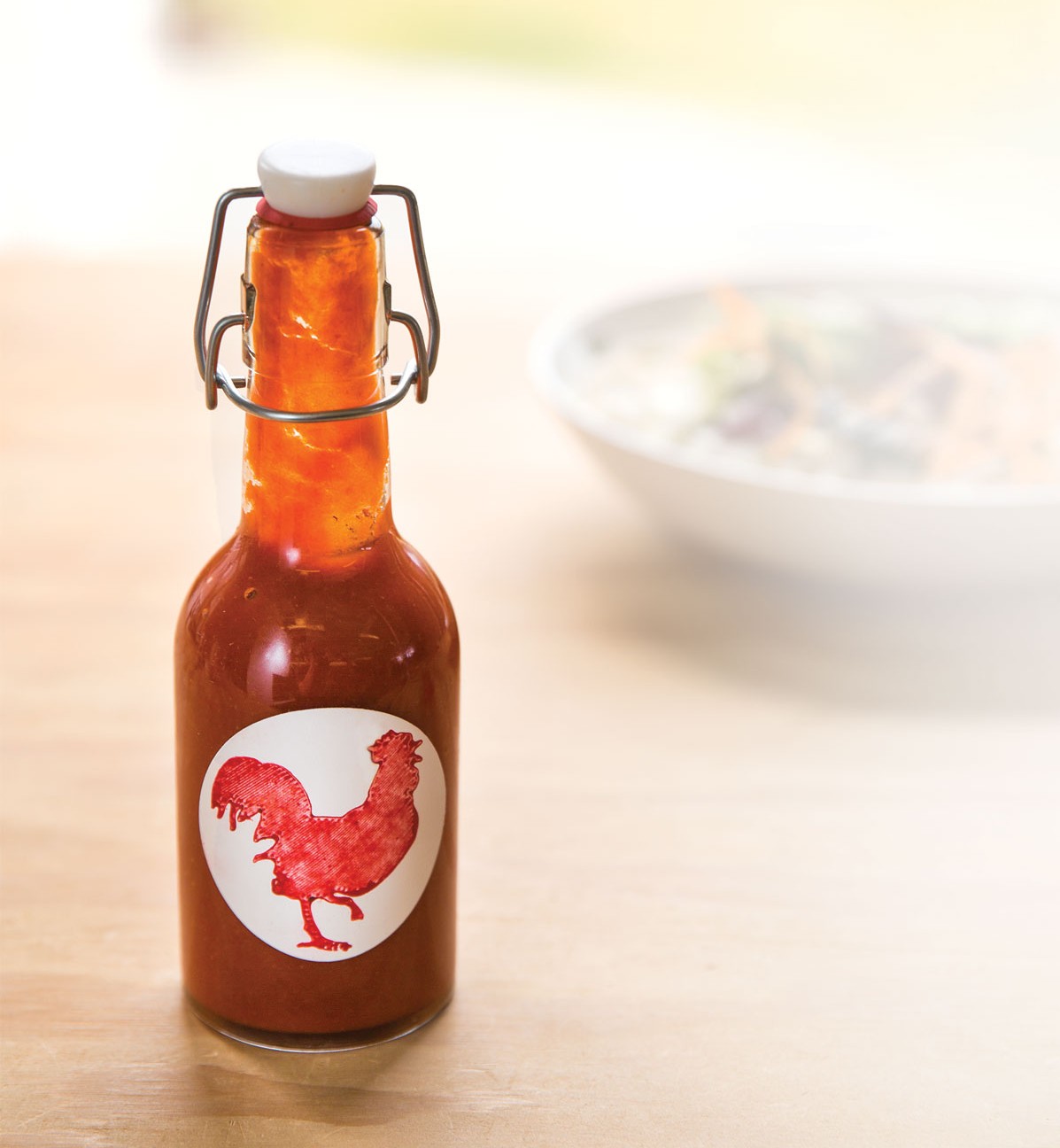This project first appeared in MAKE Volume 38, on page 96.
Sriracha pepper sauce as we know it today has been popularized by Huy Fong Foods in California and their big red bottle (complete with a giant rooster logo and bright green cap, making it easy to identify in your fridge). But the traditional Thai sauce, nam phrik si racha, has a rich history and is named after the coastal city Si Richa (or Sri Racha) in central Thailand’s Chonburi Province, where it’s a favorite on seafood.
Here’s a version you can make in your own kitchen. I adapted the recipe from The Sriracha Cookbook by Randy Clemens.
It’s not as spicy as the Huy Fong version, but you can adjust the heat to suit your taste. In any case, it gives you major street cred — especially when you bust it out in a swing-top stopper bottle or a Mason jar.
This sauce has a great, addicting flavor — hot, sweet, and garlicky — and just like the real “rooster sauce,” it tastes awesome on just about anything. Next time, I might try red serranos and a few extra Thai chilies to up the Scoville factor!
Dual Chili Extruder
Can’t get enough rooster? Try 3D-printing this twin nozzle from Thingiverse user Moko of Melbourne, Australia. “Double the nozzles for twice the spiciness in half the time!”




























